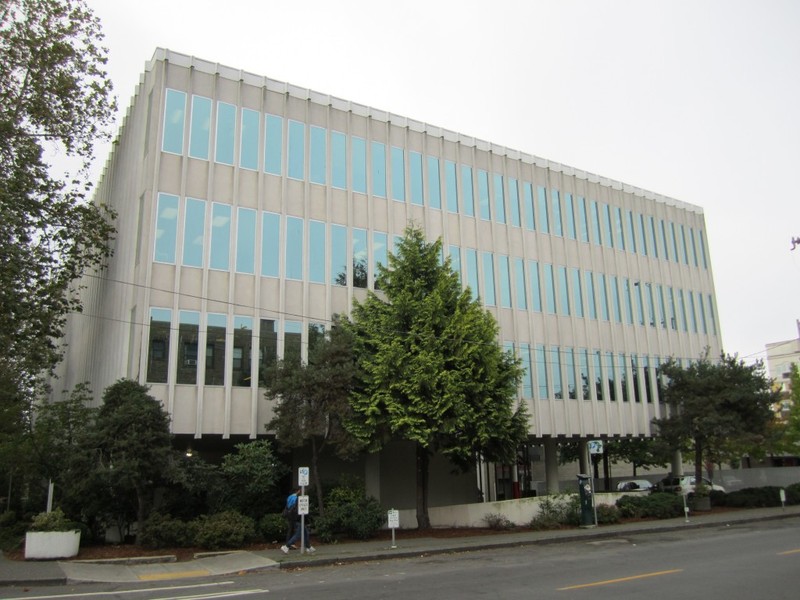Queen Anne Post Office
Introduction
Text-to-speech Audio
Images
Source: Washington State University Department of Archeology and Historic Preservation

Backstory and Context
Text-to-speech Audio
The post-war population growth of the late 1950s and 1960s resulted in an immense growth in mail volume. As well, technological advances spurred what would become the United States Postal Office (USPS) to go through major operational and organizational changes. As a result, the USPS streamlined and modernized postal delivery as a means of increase efficiency. The most memorable result of that modernization involved the 1963 creation of the modern zip code system. However, another aspect of those changes involved transferring the regional headquarters from Portland to Seattle in 1961, which prompted the design and construction of the Queen Anne Post Office and Regional Headquarters.
Built in 1965 for $1.7 million by architect Thomas Albert Smith of seattle, the Queen Anne Post Office and Regional Headquarters exceeded all other western post offices in terms of square footage and height (stories). The Queen Anne Post Office and Regional Headquarters planned to be home to postal administration offices and also act as a mail processing station.
In 1970, the Postal Reorganization Act changed the Post Office Department to the United States Postal Service, and also removed the position of Postmaster General from the Presidential Cabinet
Smith designed the Queen Anne Post Office and Regional Headquarters in the New Formalism Style, which emerged during 1960s as a rejection of the rigid forms common in Modernism that was in full-force at the time. In essence, New Formalism attempted to draw upon building forms of the past with needs created by modern society. New Formalist embraced Classical styles such as building proportion and scale, large columnns, stylish entablatures, and colonnades, as well as modern touches comprised of concrete used to create forms such as umbrella shells, waffle, folded plates and precast structural members.
At a time when stores still sent catalogues, people wrote letters and sent cards, and almost all forms of bill-paying communication was done through the mail, the Queen Anne arose to meet those needs. The building demonstrates a time when society started to adapt technology as part of efficiency, but still believed in centralizing its business headquarters in large buildings located in downtown regions.
Cite This Entry
Powers, Mathew and Clio Admin. "Queen Anne Post Office ." Clio: Your Guide to History. March 5, 2017. Accessed August 9, 2025. https://theclio.com/entry/33304
Sources
"Historic U.S. Post Offices in Washington, 1893-1941," Multiple Property Documentation (MPD), National Register of Historic Places, Sec. E, 1 (http://www.dahp.wa.gov/pages/wisaardIntro.htm)
Robert L. Landis. Post Offices of Oregon, Washington and Idaho. Portland: Patrick Press, 1969.

